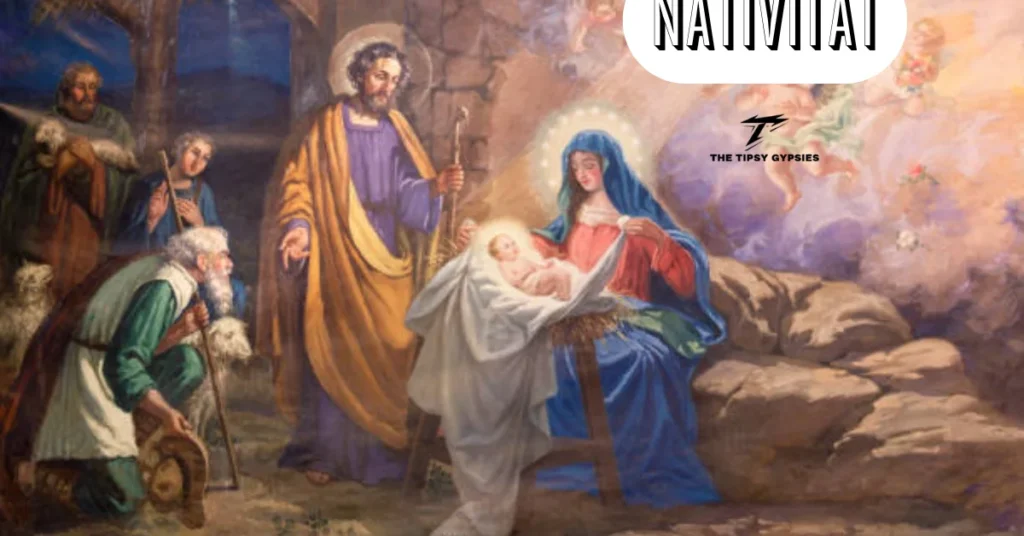Introduction: The Meaning of Nativität
Nativität holds a profound significance in the hearts of millions around the world, inviting us to explore themes of hope, love, and renewal. The birth of Christ is not just an event from ancient history; it represents a moment that transcends time and culture. As we delve into this captivating topic, we will uncover the rich layers behind Nativität—its origins, artistic expressions, and cultural celebrations. Join us on this journey as we unravel the essence of Nativität and discover why it continues to resonate with people today.
Discover insights that align perfectly with your interests—check out this related post!
The Origins of Nativität and Its Evolution over Time
The origins of Nativität trace back to the early Christian traditions, celebrating the birth of Jesus Christ. This event marked a pivotal moment in religious history, symbolizing hope and redemption for believers.
Initially, these celebrations were humble and local. Communities would gather to reenact the nativity story in simple ways. Over time, as Christianity spread across Europe, so did its customs surrounding Nativität.
In medieval times, elaborate pageants began to emerge. Churches adorned their spaces with intricate decorations that illustrated scenes from Christ’s birth. Artists depicted Mary, Joseph, and baby Jesus in various forms that conveyed deep spiritual meanings.
By the Renaissance era, Nativität became embedded in art and culture worldwide. It evolved into not just a religious observance but also an inspiration for artistic expression across different mediums — from paintings to music.
This transformation highlights how traditions can adapt while retaining their core significance through generations.
Artistic Depictions of Nativität
Artistic depictions of Nativität are as diverse as the cultures that celebrate it. From Renaissance masterpieces to folk art, each piece tells a story rooted in tradition and emotion.
In Western art, classic scenes often show Mary, Joseph, and the infant Jesus surrounded by angels and shepherds. Artists like Michelangelo and Giotto captured the essence of divinity with their masterful brushstrokes.
Meanwhile, Eastern traditions embrace different styles. Icons from Orthodox Christianity present a more symbolic approach. The vivid colors and intricate details invite reflection on spiritual themes rather than literal representation.
Modern interpretations continue to evolve. Contemporary artists experiment with materials and techniques, pushing boundaries while conveying timeless messages about hope and rebirth.
These artistic expressions not only celebrate Christ’s birth but also connect us across generations through shared visual language rich in meaning and beauty.
Cultural Significance and Celebrations of Nativität
Nativität holds deep cultural significance worldwide, transcending mere religious observance. It embodies themes of hope, love, and renewal that resonate across different communities.
In many cultures, families gather to reenact the nativity scene. This tradition fosters a sense of togetherness and shared values. Each family adds its unique twist, reflecting local customs and heritage.
Festivities often include singing carols or preparing special meals that echo the spirit of giving. Food plays a central role in celebrations, with dishes varying from region to region while still honoring the essence of Nativität.
Communities also engage in charitable acts during this season. Many organize events to support those in need, reinforcing the message of compassion inherent in Christ’s birth.
From vibrant parades to intimate candlelit services, Nativität continues to inspire joy and reflection among diverse populations around the globe.
Unlock more valuable insights and ideas—explore more content tailored just for you.
Comparison to Other Religious Traditions
Nativität holds a unique place within Christian traditions, yet it resonates with themes found in other religions. For instance, the story of miraculous births is common across various faiths.
In Hinduism, the birth of Krishna is celebrated with great fervor. His arrival was marked by divine signs and joy among his followers. This parallels how Christians celebrate Christ’s nativity.
Similarly, Buddhism recounts the birth of Siddhartha Gautama under extraordinary circumstances. These narratives often focus on hope and renewal.
Islam also recognizes Jesus (Isa) as a prophet, acknowledging his virgin birth in their scriptures. However, Islamic tradition does not celebrate Nativität in the same manner as Christianity.
These comparisons illustrate a shared human experience around themes of divinity and new beginnings that transcend individual beliefs while enriching cultural dialogues.
How Modern Society Celebrates Nativität?
Modern society celebrates Nativität in a variety of vibrant ways, reflecting its rich heritage and evolving significance. Christmas markets spring up in towns and cities, adorned with twinkling lights and festive decorations. Vendors sell handcrafted ornaments, warm drinks, and traditional treats that evoke the spirit of this sacred event.
Families gather to set up elaborate nativity scenes at home, showcasing figures that represent Mary, Joseph, baby Jesus, and various animals. This cherished tradition fosters conversations about faith and family values during the holiday season.
In many cultures, caroling is a beloved practice as groups visit homes singing joyful hymns that recount Christ’s birth. These songs resonate deeply with communities united by shared beliefs.
Additionally, charitable initiatives often emerge around this time as people embody the giving nature central to the Nativität story. Many choose to donate their time or resources to those in need—truly honoring the message of love and compassion associated with this significant occasion.
Conclusion: The Continued Relevance and Impact of Nativität Today
The essence of Nativität resonates deeply within various cultures and traditions, transcending mere religious observance. Its themes of hope, love, and unity continue to inspire communities around the world.
Today, Nativität serves as a reminder of our shared humanity. It encourages reflection on values that are often overshadowed by the hustle of modern life. The narratives surrounding Christ’s birth prompt conversations about compassion, generosity, and kindness.
As people gather to celebrate this season, they partake in traditions that have evolved yet remain rooted in meaningful symbolism. From nativity scenes displayed in homes to carols sung joyously in churches and public squares—these practices foster connection among individuals from diverse backgrounds.
Moreover, Nativität influences art and culture globally. Artists draw inspiration from its story to create works that capture the spirit of the occasion. This artistic expression helps keep the message alive across generations.
In an ever-changing world filled with challenges, reflections tied to Nativität encourage us not just to look back but also forward—with hope for peace and goodwill toward all mankind.
Stay ahead of trends with this featured post full of expert tips and guidance.






